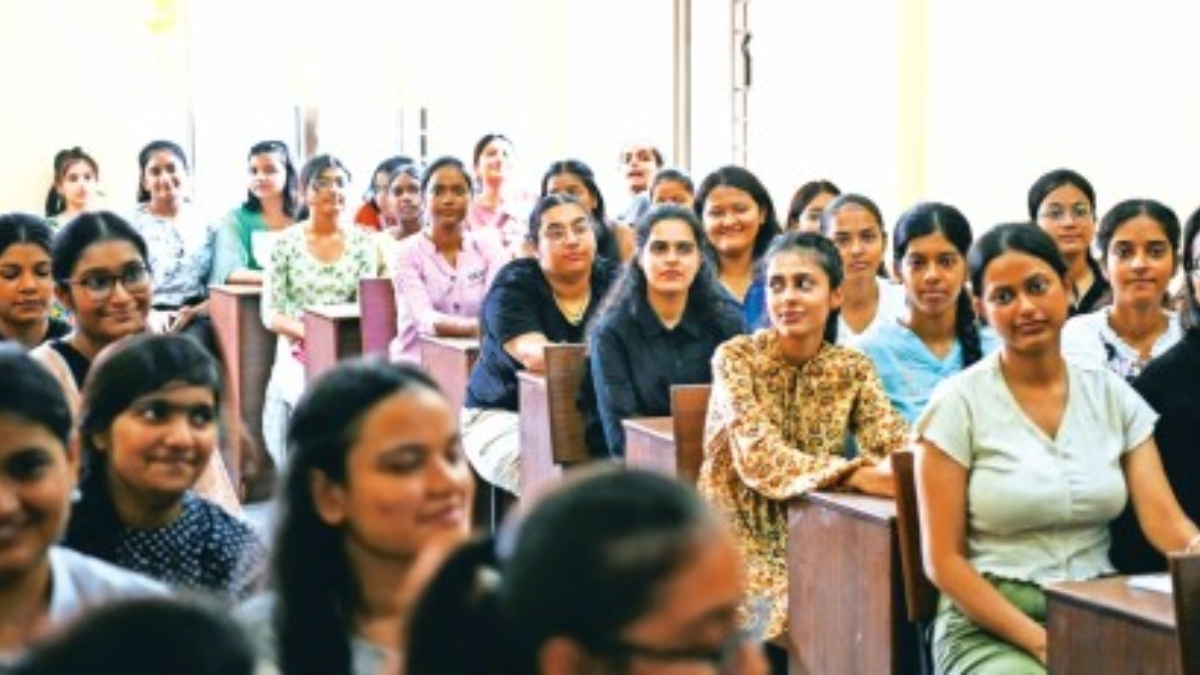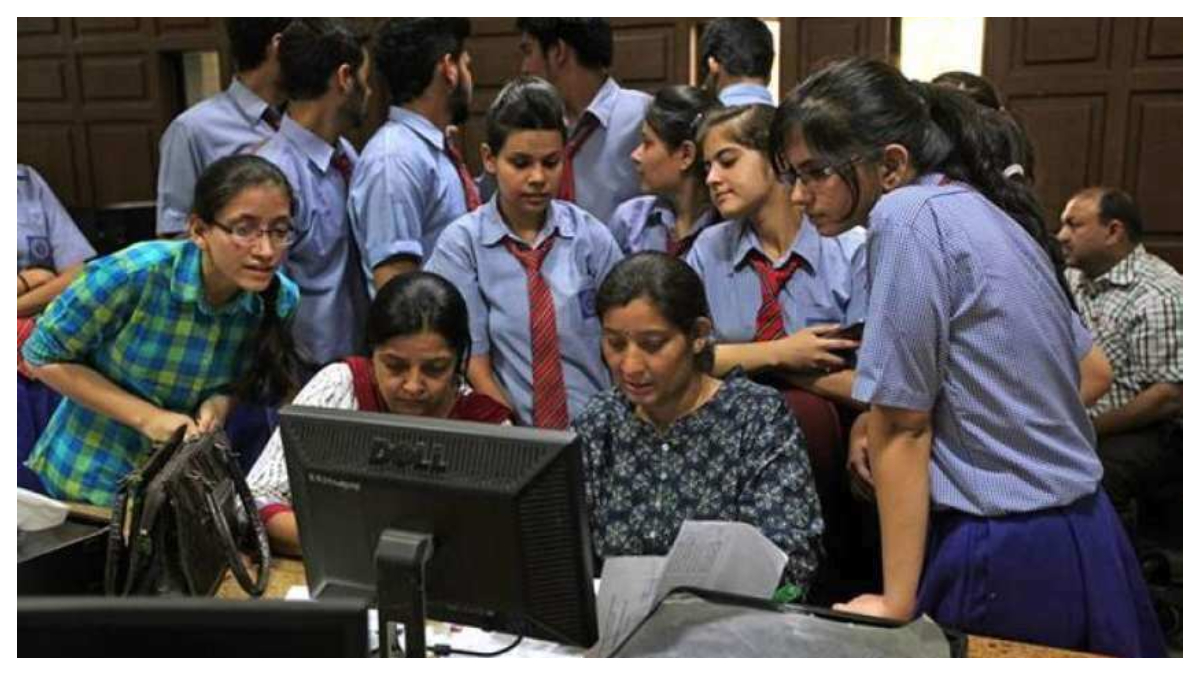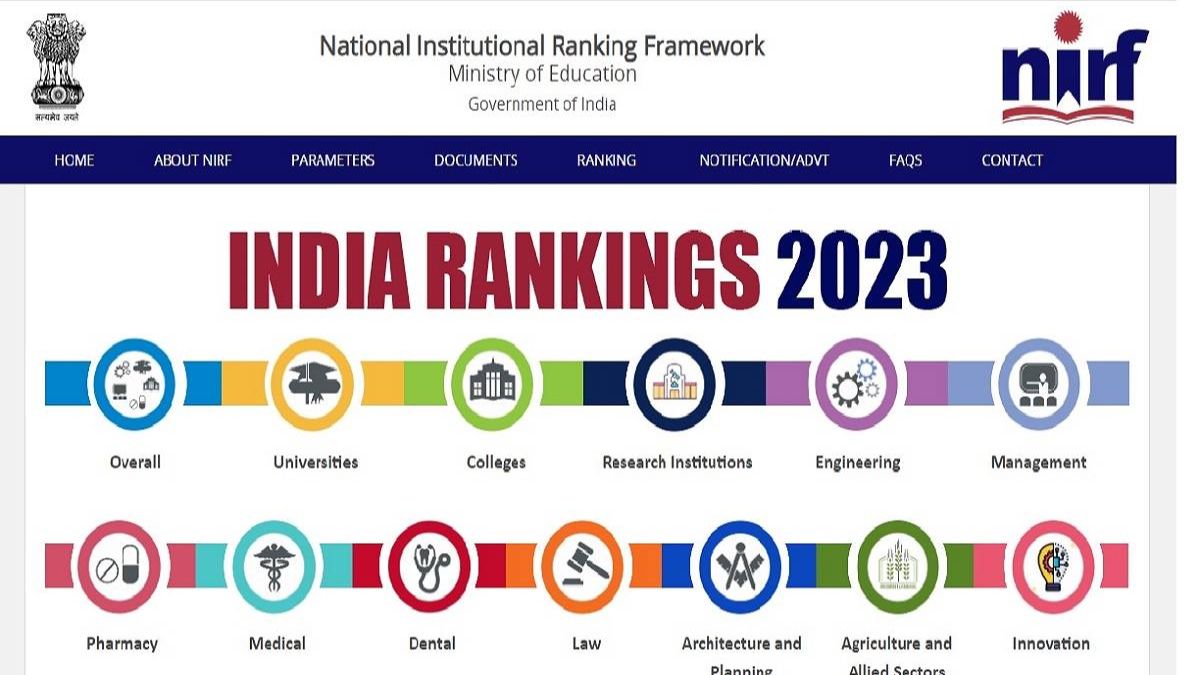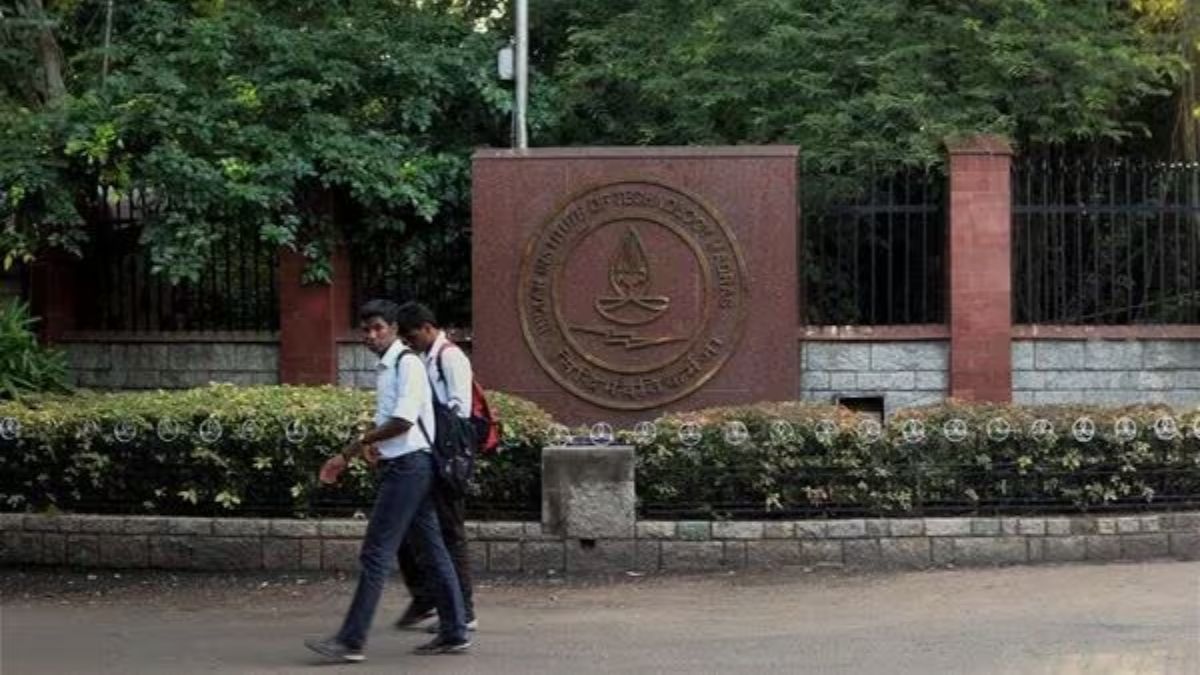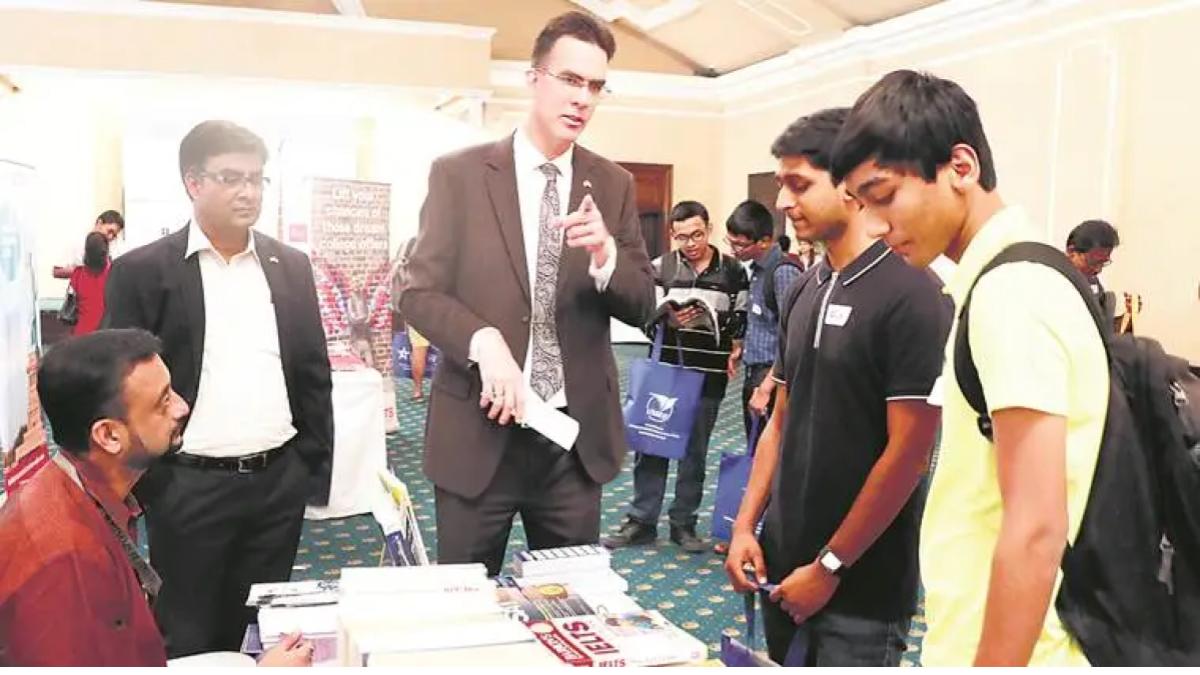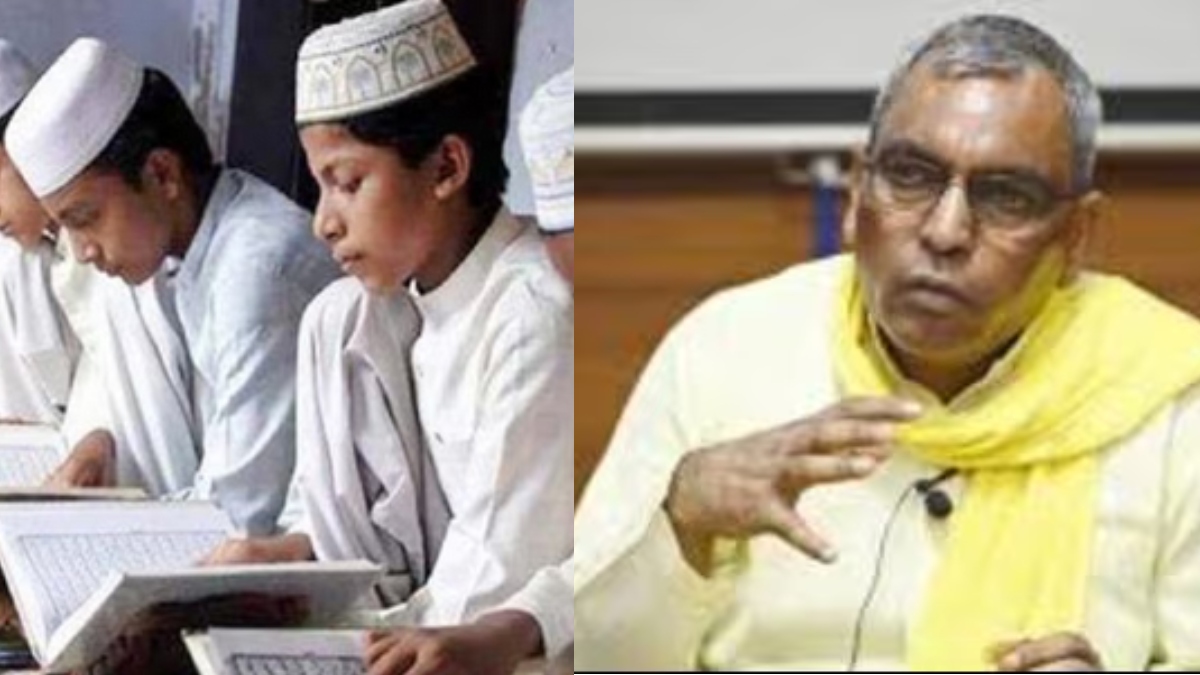Exams are just one part of the pressure that students have to go through, says 22-year-old Neeraj Nandan (named changed on request), a former student of a coaching institute in Kota who made his fourth attempt at the controversy-mired National Eligibility-Cum-Entrance Test (NEET) this year. “Not every parent can afford to send their children to Kota, especially from a financial background that I come from. So, we are supposed to perform and get selected. If we don’t, then disgrace befalls us, money goes down the drain, years are wasted. It’s a psychological pressure,” adds the native of Madhubani in Bihar. Then there is loneliness. “We don’t know who our neighbour is; we go about our daily routine cut off from the world, attend classes where teachers cannot be that concerned about how an individual student is studying, owing to large batches. We hardly find someone to share our stress with. We do not even open up to our parents because of expectations and the fear of shame if we are not able to perform,” Nandan elaborates. Nandan’s thoughts probably sum up the dark reality haunting Kota in Rajasthan, the coaching capital of the country, located about 240 km south of the state capital Jaipur. Admission numbers are on a wane, salaries of faculty members and administrative staff are being slashed and, not to forget, the negative publicity that the city has been getting over student suicides. As of July, there have been at least 13 suspected cases of student suicides in the city. The figure stood at 26 last year, an overwhelming number and the highest since 2015, as per reports. Incidentally, the perception of Kota doesn’t revolve just around student suicides. It is also accompanied by issues like bad living conditions, distractions (read teenagers getting into relationships) and the cost factor. “While we attribute the decrease in student numbers to the negative image resulting from several high-profile suicide cases in recent years, I believe this is not the primary factor. However, the extensive media coverage of these incidents has left a significant impact,” says Kamal Singh Chauhan, a former teacher at coaching institute Resonance in Kota. Vanshika Ahuja, 18, who is preparing for NEET online from edutech platform Unacademy, opines how the environment of Kota has become “toxic”. “Any person, especially like me who has been raised by a single parent, will not be able to survive there. Those who own hostels and PG accommodations there are not quite accommodating. My friends who have spent time in Kota say staying at home and spending time in the library from 9 am to 7 pm are a better option,” she adds. Dip in admissions This year, Kota has seen a startling dip of up to 40% in student admissions. This is at a time when the branches of prominent institutes in cities such as Patna, New Delhi, Latur, Mumbai, Rajkot, Baroda, Sikar and Lucknow are seeing an uptick in admissions. So, is brand Kota losing its sheen? In Kota, the prominent coaching centres are Career Point , Bansal Classes, Allen Career Institute, Vibrant Academy, Motion Education, Resonance Eduventures, Reliable Institute (backed by Allen), Byju’s-owned Aakash Institute, Unacademy and Physics Wallah (PW). Allen Career Institute has seen a staggering decrease of around 40% in admissions this year. Unacademy, one of the new players (it opened its first offline centre in Kota in May 2022), has seen a 30% decrease, while Motion’s (one of the oldest players) admissions, too, have seen a decrease of 30%, according to media reports and teacher disclosures. The newest player, edtech firm Physics Wallah (it opened its first offline centre in Kota in June 2022), told FE that its Kota centre has seen a 15% dip in the number of students as compared to last year. However, in centres other than Kota, the coaching start-up says it has doubled its numbers. PW says there were 200,000 admissions in the academic year 2024-25, up from 140,000 in 2023-24, across centres in 105 cities. Rajesh Maheshwari, founder director at Allen Career Institute, confirmed the decline in admissions to Kota-based educational institutions this year. According to a media report, Maheshwari attributed the decrease to ‘disinformation’ about Kota. However, students and the teachers, besides a popular coaching institute, that FE reached out to, concur that Kota is equivalent to cut-throat competition, excessive pressure on students, inhospitable living conditions, not so-conducive atmosphere to study, loneliness, being expensive and, worst of all, students ending their lives. All of this is coupled with a bleak chance to get selected in competitive exams where contenders are disproportionately more than the limited seats. Business of learning According to estimates, the economy surrounding Kota’s coaching industry is worth nearly Rs 12,000 crore. On an average, students spend at least Rs 1 lakh a year on coaching fees, and coupled with living expenses, the figure may even go up to Rs 3 lakh. “If you are staying in a high-profile hostel or a PG (paying guest) accommodation, the expenses can go even beyond Rs3 lakh,” says Neeraj Nandan. The cost of living in Kota has increased significantly over the years, say teachers and students alike. Heavily dependent on aspirants, almost every residential property in the coaching hub has been converted into rental accommodations, and they charge about Rs 7,000- Rs 8,000 per student per month. “In many cases, the expenses for accommodation and living in Kota have become comparable to, or even exceed, the tuition fees for a session. This financial burden discourages many students and their families from choosing Kota as their study destination,” says Chauhan of Resonance. According to Nandan, coaching institutes “farm the students” and segregate them into different batches depending on their knowledge and aptitude. Faculties, based on their “quality”, focus strategically on those who have the potential to become toppers and train them. Usually, new students are not aware of this, so they get stuck in the “cycle” and their stays in the city get prolonged. “Now that they have been admitted to the leader batch (initial batch), they won’t get quality teachers and they won’t be able to study properly there. They (coaching centres) send them there so that they get admitted in Kota next year in the achiever batch (later batch) and they keep earning money,” he says. These tactics delay the stays of students in Kota, mounting pressure on them to qualify for the exam and get selected while adding to their financial woes, he adds. Nandan secured 621 marks and is among many students who faced the brunt of the controversy surrounding NEET. The delay in results over court cases on paper leaks this year, say teachers, is also one of the reasons behind the dip in student admissions in Kota. “Almost every year, at least 25 to 40% of students come to Kota to target the NEET. Many are repeaters who didn’t turn up this year due to delays in the result and the uncertainty of the re-test,” explains Chauhan of Resonance. Faculty pay cuts Such a shift has led the coaching giants to either slash the pay or transfer the teachers to other centres. For instance, Allen reportedly slashed fixed salaries for its at least 4,000 faculty and administrative staff by 20-40% as well as put 30% part of salary in variable pay in Kota and other cities for academic and non-academic staff. While Reliable Institute also indulged in cutting down on salaries, Physics Wallah transferred teachers to centres outside Kota. Media reports say the salaries of at least 60 faculty members at Reliable Institute were reduced to as much as 50%. This led to almost 600 teachers writing to the institute and calling it a “shock” to them, “affecting their financial as well as mental state”. Edtech firm Unacademy, too, reportedly reduced its faculty’s salaries by 20-25% and has announced that it won’t be giving any appraisals this year. Its CEO Gaurav Munjal said that the company had an above-average performance in 2024 as compared to the previous year, however, it failed to meet its growth targets, necessitating a halt in appraisals attributing the failure to market challenges, headwinds, and declining revenue from offline centres. This is coming after the poaching war among coaching centres in the aftermath of the pandemic, offering competitive salaries to teachers from other institutes as the online edtech firms thronged to Kota to open up offline coaching. “No doubt the senior officials are saying that there is a dip of 30-40% and that’s why they are cutting your salaries. They are also given the option that teachers can go to other centres if they are not agreeable with the salary. There is a mix of both—student count and the market going down nowadays—so teachers don’t have any other option to switch. Institutes are taking advantage of this,” says Chauhan of Resonance. “The obvious reason behind salary cuts and transfers is the 30-40% decrease in student admissions. How will they justify the faculty strength in the coaching centres? If they are maintaining a 1:40 or 1:50 ratio, and if it becomes 1:25, then the economics of the coaching institute gets disturbed,” says another teacher Nilesh Gupta. Gupta has extensive experience working with Kota coaching centres. He was the CEO of Bansal Classes, has worked with Vibrant Academy and Career Point, and was the vice president of Resonance. Now, he runs a residential programme Crianza to provide an alternative to students for academic guidance and mentorship. Meanwhile, the guidelines issued by the education ministry in January this year restricting coaching centres to enroll students under 16 years of age is also creating hurdles. “Another factor, which we miss, is the presence of too many restrictions from the government in terms of guidelines and compliances and this makes it a little difficult. Recent guidelines, which say one cannot admit anybody less than 16 years for coaching, are also discouraging parents to send their children to Kota,” says Gupta of Crianza. Kota’s loss, others’ gain “If I am getting to prepare for an exam in which seats are limited, reducing my chances to get selected, but I am doing it from a place near my hometown reducing the costs, why would I not choose that centre?” asks Neeraj Nandan. Coaching institutes, too, have understood this sentiment and are on a spree to open up centres across the country. Noting how there has been an increase in admissions at their centres other than Kota, a PW spokesperson told FE, “Our strategic efforts to reduce pressure on traditional education hubs like Kota involve opening multiple centres in Uttar Pradesh, Bihar, Maharashtra, Madhya Pradesh and Rajasthan—regions typically known for producing the most number of competitive exam aspirants.” “We have doubled our admission numbers in these centres by bringing quality education to students’ doorsteps, thereby improving their emotional and psychological well-being as they remain closer to the comfort of their homes during their competitive exam journeys. Furthermore, students can save on migration expenses, reducing the financial burden on their parents,” the spokesperson adds. The institutes have opened centres in many other cities in the past two years. Many students studying in Kota earlier, who could not secure a seat in the exam, joined institutes nearby. Yash Raj, 17, who is preparing for IIT-JEE from Allen, Kolkata, says he asked those who shifted to the nearby centre about Kota. “They told me there is a lot of burden there, they are called even on weekends, living conditions are bad and there is a lot of peer pressure. Since this centre is nearby, I don’t feel that pressure,” he adds. The batch sizes in Kota institutes are usually around 200, which teachers say are big. “There was a time when Kota had its own USP such as teaching methodology, teachers, and its overall environment but over time, it lost it,” Gupta says, adding: “Teachers trained in Kota have spread to different parts of the country. Kota does not have any USP anymore.” “Expertise that is comparable to Kota is now available elsewhere too, and students are getting the same study material and exposure,” he points out, saying: “As long as Kota does not bring any significant change in its strategy, its glory cannot be brought back.” Traditional coaching centres have competitors, both offline and online, like Unacademy and PW. “Earlier, students flocked to Kota to be a part of prestigious coaching institutes like Bansal, Career Point, Resonance and Vibrant Academy. However, the impact of these brands has waned in recent years. The emergence of numerous online coaching platforms has shifted students’ focus. These online institutes offer competitive alternatives that often capture students’ attention more effectively than traditional coaching centres,” says Chauhan of Resonance. Players like Allen, Unacademy and Physics Wallah have been spreading their tentacles in other Indian cities. “Many renowned Kota-based coaching institutes have strategically opened branches in various potential cities. This has allowed students to access quality education closer to home, reducing the need to relocate to Kota. These satellite centres serve students from nearby areas, holding them back from moving to Kota,” he says. Yash Raj prefers Allen’s Kolkata centre for IIT-JEE preparation, Vanshika Ahuja would like to remain in Delhi and go for Allen or Aakash for NEET preparation, and so on. Meanwhile, Sikar, which is around 400 km from Kota, has been growing in the shadows. The city mostly caters to students from Rajasthan and nearby Haryana. According to reports, Sikar coaching centres have impressive performance in this year’s NEET exam with 37 out of 50 centres located in the district with the highest percentage of candidates scoring above 650 (considered a good score to secure admission in government medical colleges). Media reports cite students’ concern over student suicides, pressure and overcrowding as reasons behind choosing Sikar. The growth of online education is another major reason behind Kota’s decreased attraction as most of the coaching institutes have online classes and provide much-needed ‘flexibility’ and reduced cost. “The online education market provides a cost-effective and flexible solution for students and parents. Students can now learn at their own pace and in their own space, which is highly appealing. The affordability and convenience of online coaching have made it a popular choice, further contributing to the decline in students moving to Kota,” comments Chauhan of Resonance. This is especially seen in tier 2 and tier 3 cities, where students are opting for online courses. None
Popular Tags:
Share This Post:

SSC GD Constable Recruitment: Registration to begin soon at ssc.gov.in – Find all the details here
August 26, 2024What’s New
Spotlight
Today’s Hot
Featured News
Latest From This Week
SSC MTS 2024 Exam Dates Out: SSC exam date 2024 announced for MTS/ Havaldar posts – Check details here
JOBS-CAREER
- by Sarkai Info
- August 13, 2024
UPSC announces ESIC Nursing Officer results; know how to check, details INSIDE
JOBS-CAREER
- by Sarkai Info
- August 12, 2024
Odisha OPSC PGT exam dates 2024 released at opsc.gov.in – Check full schedule, other details here
JOBS-CAREER
- by Sarkai Info
- August 12, 2024
Subscribe To Our Newsletter
No spam, notifications only about new products, updates.










